Search Results
Fine Jewelry University Articles matching: “crown mark”
Showing only FJU Article results. Click here to show all results.
Fine Jewelry University (Show All FJU Articles)
-

How to Sell Jewelry on Craigslist and Facebook Marketplace
Selling jewelry on Craigslist, Facebook Marketplace, and other online local classified sites is a great way to get cash for your jewelry, but there are some …’t have a way to meet the potential buyer at a public place, then do not sell your jewelry through the Craigslist or Marketplace. The buyer’s bank is a good public location because if they wish to buy the jewelry they can go and get the … method. Checks of all kinds (personal, cashiers checks, money orders, etc.) can be fakes. If you are on Facebook Marketplace, check the profile of the potential buyer. Is it a brand new profile with an obviously generic or fake image? …
-
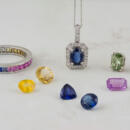
Gem in the Spotlight: Sapphire
…. It is also considered a booster for the immune system, protecting the body in general from disease. The British Crown Jewels Collection contains several sapphires. One of them, the Saint Edward’s Sapphire, is a large sapphire set in the … the Abbot of Westminster to the Royal British Treasury. The famous sapphire remains there, decorating the Imperial Crown ordered by Queen Victoria. Deriving its name from the Greek word for blue, sapphire used to refer to any blue stone. …
-
Understanding the Diamond Buying Game
… two could be a very poor cut (68%). Another way is both can have a 61.5% depth but diamond one has the correct crown to pavilion proportion and diamond two has a very deep pavilion and extremely thin crown. Other ways are how thick the … with the same standard. GIA and AGS use the most technical standards. EGL uses a looser grading standard, I call market grading. In addition, EGL has a franchise like business model and different EGL labs grade wildly different. Some …
-
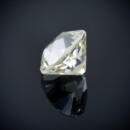
The History of Diamond Cuts
… earliest and most basic of cuts. It has an octagonal girdle (the side edge of the diamond) with a table and eight crown (top part of the diamond) facets plus eight pavilion (the bottom part of the diamond) facets plus a culet (the point … to 24 facets coming to a point in the middle. But its most recognized aspect is the flat bottom. Basically, it is a crown without a pavilion. Interesting fact #2: Some diamond cuts do not have a standard number of facets. As we have just …
-
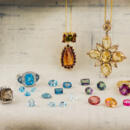
Gem in the Spotlight: Topaz
… to be the largest diamond ever found (prior to the Cullinan Diamond) at 1,680 carats and was set in the Portuguese crown jewels as such. It wasn’t until many years later that more modern testing identified it as a clear topaz instead. …
-

How to Sell Jewelry on eBay and Other Websites
… unique and are willing to pay a high price for it. Second, the others are looking for a great bargain, wanting only to pay the lowest price. If your jewelry is unique, get a high price if not, then the bargain hunters are your market. The success of eBay helped a much older business the pawn shops. The pawn shops who sell jewelry on eBay and other online sites are willing to take much less because they buy them so cheap. Unfortunately, they may be your biggest …
-
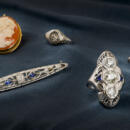
How to Value Inherited Jewelry
…, jewelry value is not one set number. It changes with the situation (who is buying, and who is selling) and the marketplace (global economy, commodity prices, local jewelry market, etc.). And, it changes with time and styles. …value of an item could be $1,000 given one set of conditions, but in a certain area, given the way it was put out to market, the condition of the item, the photo in the ad, and a million more factors the seller may only find a buyer … different types of appraisals . The replacement value insurance appraisal has the least correlation to the actual market value of the jewelry item. So, even though insurance appraisals are commonly available, this would be the least …
-
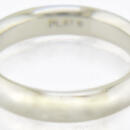
Platinum
… of the metal and none of its volume is lost. In addition to its strength and density, platinum has another remarkable quality – pliability. Platinum is a symbol of true love, purity, rarity and strength. These qualities of platinum are … white luster. This helps to reflect the true radiance of diamonds. In the United States platinum is usually marked: PT or PLAT. In Europe, platinum is identified by the following marks: 950 or PT950. The History of Platinum in Jewelry …
-

How to Sell Your Jewelry
… service for a fee. Think of a jewelry broker as a hired professional working for you against a very sophisticated market like the jewelry industry. Make sure their allegiance is to you alone. Most jewelry brokers are highly trained in … of jewelry. Also realize that the prices asked for in the paper are rarely achieved and do not reveal the true market value. Some times the jewelry is sold for very much less then advertised or never sold at all. But with some safeguards…
